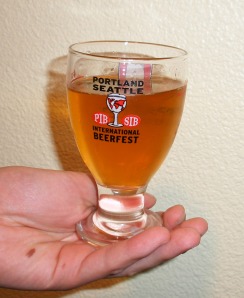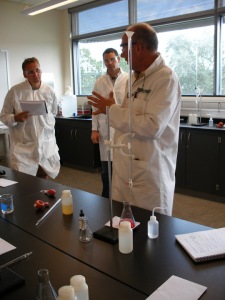My local library has a donation box, and every few months they have a sale of the books put into that box to help fund the library. This time around, I found a gem, a 4th Edition book called First Steps in Winemaking by C.J.J. Berry. The book, which was published in Great Britain, does not give a date published, but I believe it was from 1970. Today, you can buy the 8th Edition published in 1994.
Berry gave a little introduction, saying, “This little book really started as a collection of recipes, reliable recipes which had appeared in the monthly magazine, “The Amateur Winemaker”. First published in January 1960, it was an instant and phenomenal success…”
It is a lot like today’s wine making books. There is a nice cartoon diagram showing the process in which fermentation happens, and black and white pictures of various winemaking activities by people with 1960s haircuts. This book does talk about growing your own grapes a little, including varieties, planting, and cuttings. It also talks about how to form a winemaking club, and how to organize a wine competition.
The bulk of the book, though, is dedicated to 130 recipes set to a suggested calendar. For instance, one would make a prune wine in January from dried prunes, and cherry wine in July when cherries are ripe. However, some recipes are for making liquors, such as taking fresh pineapple juice and adding enough brandy to it to keep it stable.
Some of the more odd recipes that I have not really seen before include: Birch sap wine complete with tapping instructions, primerose wine, coltsfoot wine, cowslip wine, farmhouse tea wine made with wheat, tea, and lemons, hawthorn blossom wine, sack wine as mentioned by Shakespeare, wallflower wine, pansy wine, oakleaf or walnut wine, honeysuckle wine, marigold wine, marrow wine, meadowsweet wine, golden rod wine, vine pruning wine, and cornmeal wine.
An odd thing is that before all the recipes, it has a warning about poisonous, doubtful, and not recommended plants for making wine out of. I say odd because the not recommended category contains items that there are popular recipes for today, such as potato (how else do you make vodka?), pumpkin, and tomato. Berry claims, “they are not suitable winemaking material either because of fermentative difficulties or because they are not palatable.” Winemaker Magazine would beg to differ on the tomato, as they had several pages on the topic in their June-July 2004 issue!
One nice thing is that since Britain was attempting to go metric at the time of publication, all recipes are given in the British system, metric system, and US system.














